Abstract
The temperature optimum for photosynthesis of natural populations of blue-green algae (cyanobacteria) from Lake Mendota was determined during the period of June to November 1976. In the spring, when temperatures ranged from 0 to 20°C, there were insignificant amounts of blue-green algae in the lake (less than 1% of the biomass). During the summer and fall, when the dominant phytoplankton was blue-green algae, the optimum temperature for photosynthesis was usually between 20 and 30°C, whereas the environmental temperatures during this period ranged from 24°C in August to 12°C in November. In general, the optimum temperature for photosynthesis was higher than the environmental temperature. More importantly, significant photosynthesis also occurred at low temperature in these samples, which suggests that the low temperature alone is not responsible for the absence of blue-green algae in Lake Mendota during the spring. Temperature optima for growth and photosynthesis of laboratory cultures of the three dominant blue-green algae in Lake Mendota were determined. The responses of the two parameters to changes in temperature were similar; thus, photosynthesis appears to be a valid index of growth. However, there was little photosynthesis by laboratory cultures at low temperatures, in contrast to the natural samples. Evidence for an interaction between temperature and low light intensities in their effect on photosynthesis of natural samples is presented.
Full text
PDF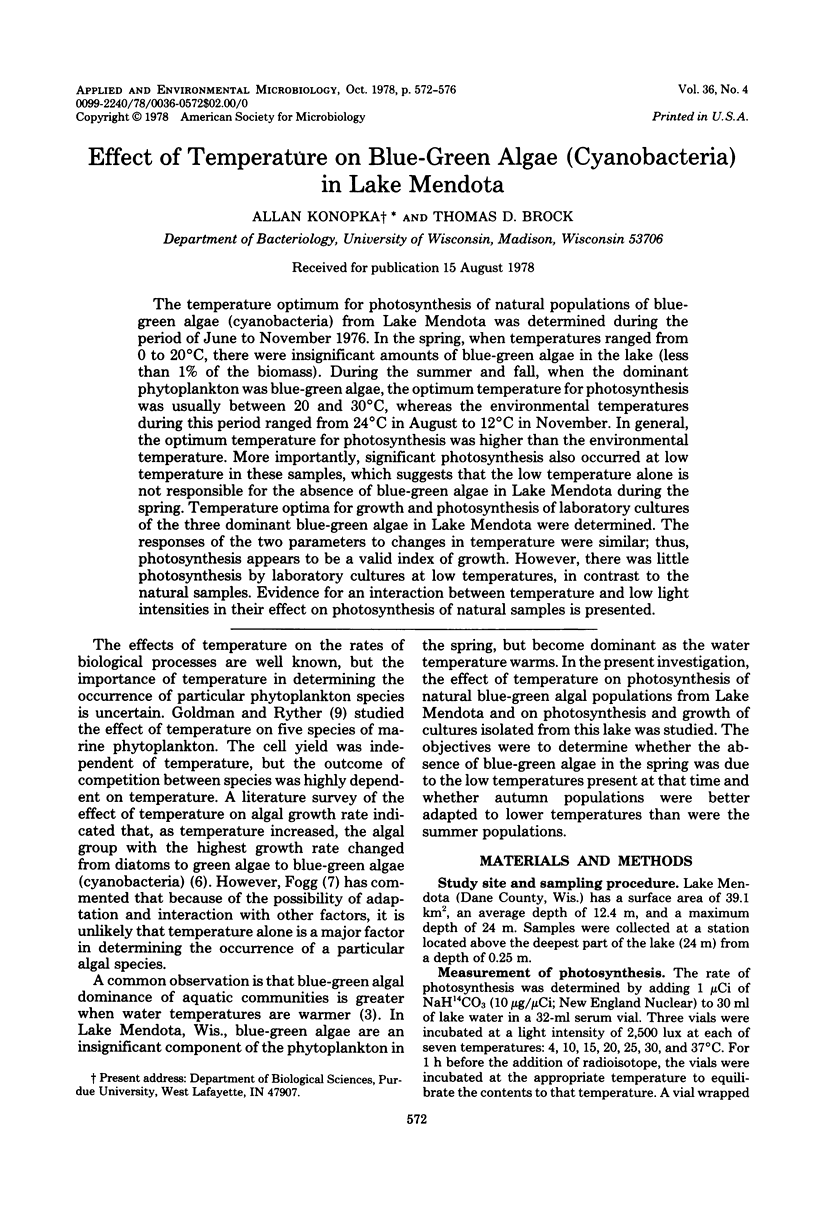
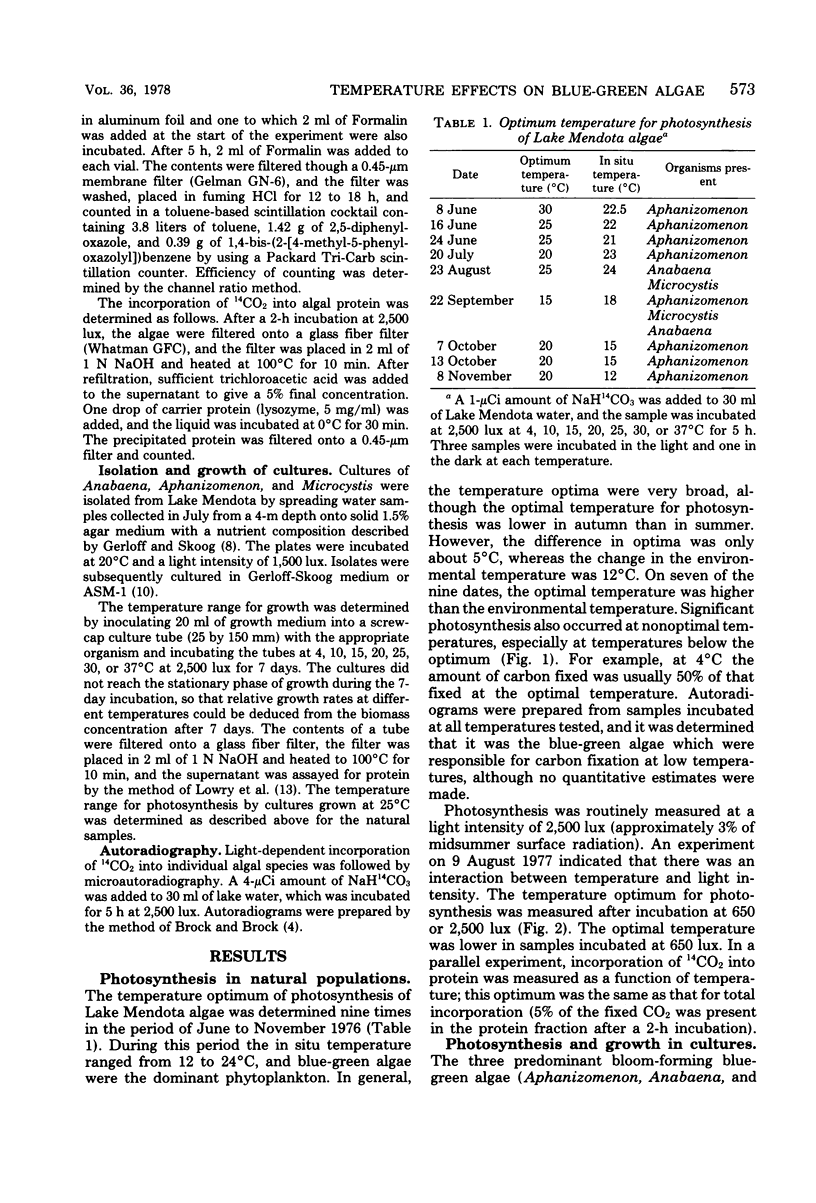
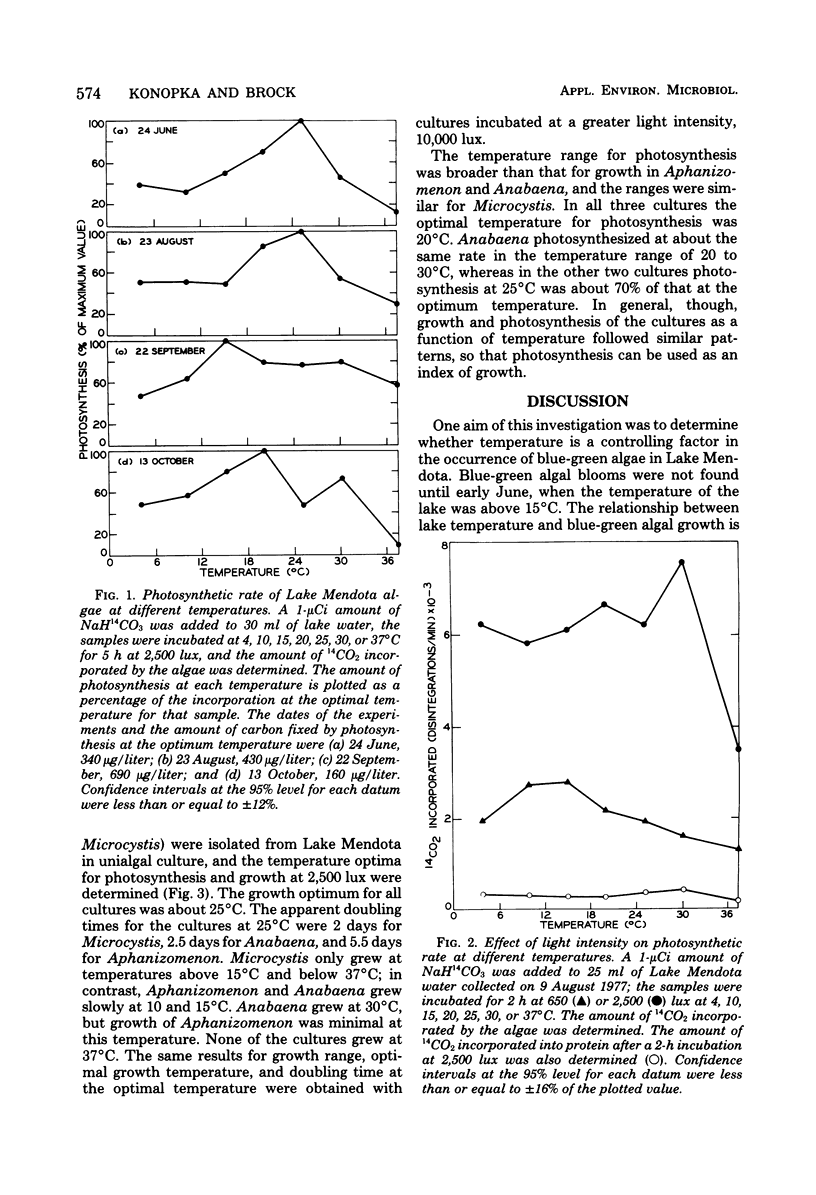
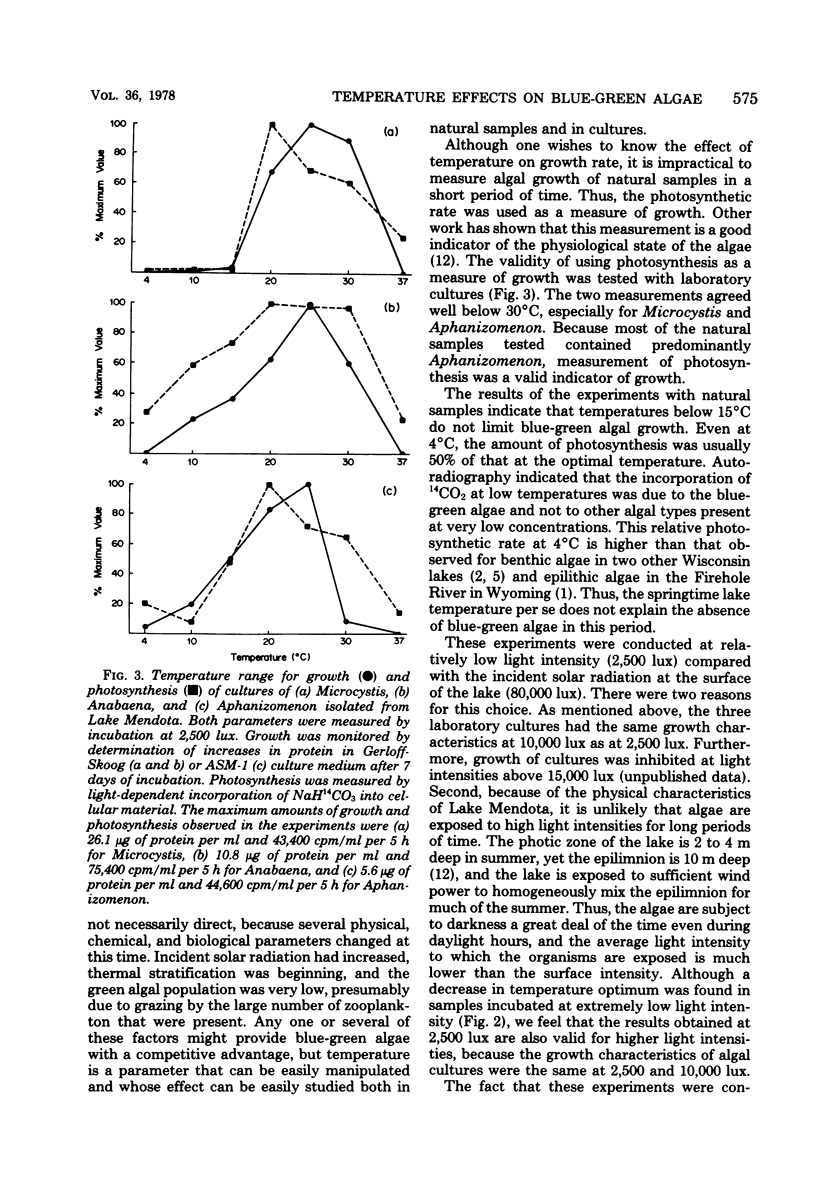
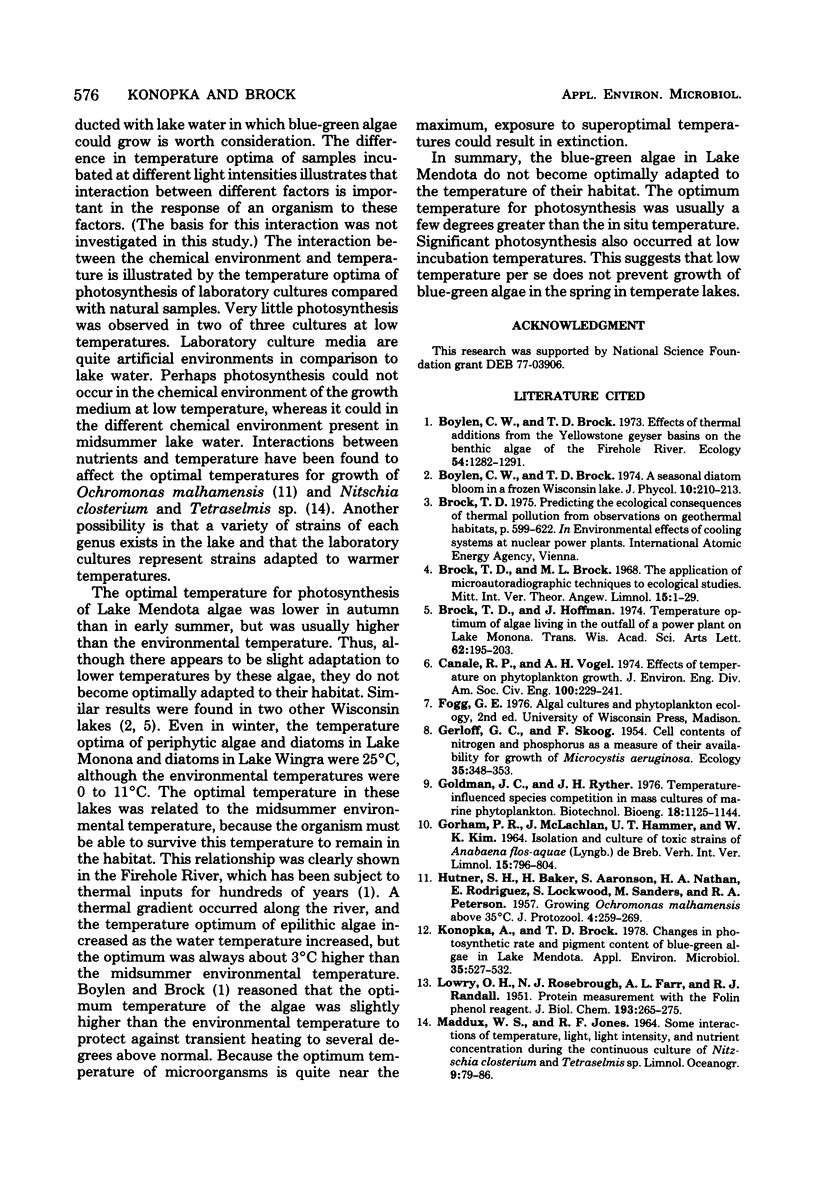
Selected References
These references are in PubMed. This may not be the complete list of references from this article.
- Konopka A., Brock T. D. Changes in photosynthetic rate and pigment content of blue-green algae in Lake Mendota. Appl Environ Microbiol. 1978 Mar;35(3):527–532. doi: 10.1128/aem.35.3.527-532.1978. [DOI] [PMC free article] [PubMed] [Google Scholar]
- LOWRY O. H., ROSEBROUGH N. J., FARR A. L., RANDALL R. J. Protein measurement with the Folin phenol reagent. J Biol Chem. 1951 Nov;193(1):265–275. [PubMed] [Google Scholar]


